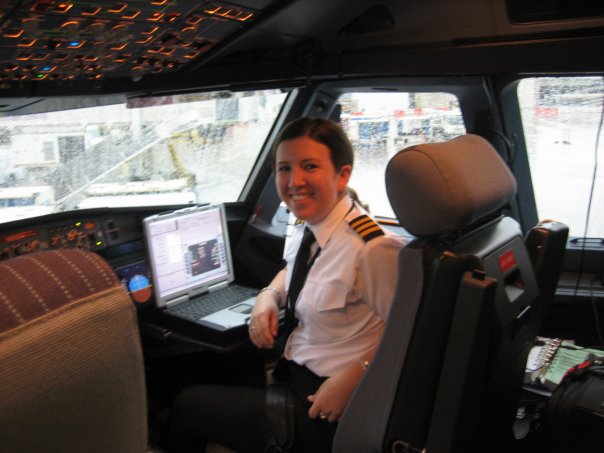Last night I studied the Electronic Information System (EIS) and the Auxiliary Power Unit (APU). The EIS contains all the screens in the cockpit that we receive information on. In the A320 there are 4 screens.

(http://www.aerospace-technology.com/projects/a320/images/A320_cockpit1.jpg)
The pair on the left are the captain's PFD (primary flight display) and ND (navigation display). On the right side are the first officer's PFD and ND. The two screens in the middle are the engine and warning display (E/WD) and the systems display (SD). Almost all the information we need in flight are on these 6 screens. You can use a control panel to change the system you view on the SD. It's one of the reasons I love the Airbus -- everything is presented in such a clear fashion.
The APU is what normally provides power and air conditioning when the engines aren't running. More commonly now we use external power and air for these functions as the APU burns fuel. It's basically a small jet engine mounted in the tail. It's geared into a generator that provides enough power for important systems while on the ground. It also provides the electricity and air needed to start the first engine. If you've ever been on a flight where the crew had to start an engine at the gate, this was probably because the APU was inoperative. I have had this happen a few times. I don't like flying without one because you've effectively lost a backup generator in case you have an engine failure. However, a broken APU isn't a good enough reason to cancel a flight!
Tonight's topics: the electrical, fire detection and GPS navigation systems. I'm so happy that I may do another section tonight. I love learning aircraft systems and I love this airplane! I can't wait to fly one again.

2 comments:
I love that picture.
Who decides how the displays are configured (that is, which one displays which system or info page? Is that specified in company procedures, or is it up to the pilots? Or a little of both? Does the plane itself ever automatically configure the displays?
The screens default to certain positions and some change depending on what phase of flight you are in or if there is some sort of abnormal with a system.
If one of the screens happens to break the pilots can display its information on another screen.
Post a Comment